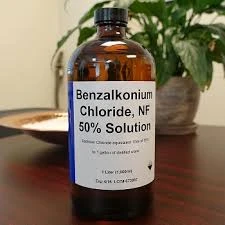amphoteric polyacrylamide
Amphoteric Polyacrylamide An Overview of Its Properties and Applications
Amphoteric polyacrylamide (APAm) is an innovative polymer that has garnered significant attention in recent years due to its unique properties and versatility across various industrial applications. This water-soluble synthetic polymer, derived from the polymerization of acrylamide monomers, contains both cationic and anionic functional groups. These dual charge characteristics offer a myriad of opportunities in industries such as water treatment, oil recovery, agriculture, and cosmetics.
Chemical Structure and Properties
The chemical structure of amphoteric polyacrylamide comprises acrylamide monomers that are partially neutralized with ionic groups. This results in a polymer capable of interacting with both positively and negatively charged species in solution. The amphoteric nature of the polymer arises from the presence of functional groups such as carboxyl (-COOH) for negative charge and amine (-NH2) for positive charge. This dual charge functionality allows APAm to adapt to varying pH levels and ionic strengths in diverse environments, making it a superb candidate for various applications.
APAm exhibits excellent solubility in water, viscosity stability, and the ability to form hydrogels. Its molecular weight can be adjusted during synthesis, giving rise to polymers with tailored properties for specific uses. Additionally, the presence of both positive and negative charges enhances its flocculating and coagulating abilities, enabling it to effectively bridge particles together in various media.
Applications of Amphoteric Polyacrylamide
1. Water Treatment
One of the most notable applications of amphoteric polyacrylamide is in the field of water treatment. APAm is frequently used as a flocculant in wastewater treatment processes. Its ability to interact with suspended solids allows it to agglomerate particles, improving sedimentation rates and facilitating the removal of impurities from water. The amphoteric nature of the polymer also enables it to effectively treat waters with varying compositions, including those with mixed charge characteristics. This adaptability is particularly beneficial in municipal water treatment, industrial wastewater facilities, and mining operations.
amphoteric polyacrylamide

2. Oil Recovery
In enhanced oil recovery (EOR) processes, amphoteric polyacrylamide serves as a viscosity modifier. By increasing the viscosity of the water used in injection wells, APAm helps to improve oil displacement and recovery rates. The use of APAm in this context not only enhances the efficiency of oil extraction but also minimizes the environmental impact by reducing the need for harsh chemical additives.
3. Agriculture
In agriculture, amphoteric polyacrylamide plays a crucial role as a soil conditioner and a water retention agent. It improves soil structure, enhancing aeration and water infiltration while reducing erosion. The gel-like properties of APAm enable it to retain moisture in the soil for extended periods, ensuring that crops receive adequate hydration. This attribute is particularly advantageous in arid regions where water conservation is paramount.
4. Cosmetics and Personal Care
The cosmetic industry has also embraced the use of amphoteric polyacrylamide due to its thickening, stabilizing, and film-forming properties. It acts as a texture enhancer in creams, lotions, and gels, providing a smooth application and enhancing the overall feel of the product. Additionally, its biocompatibility makes it suitable for use in various personal care formulations.
Conclusion
Amphoteric polyacrylamide stands out as a multifaceted polymer with varying applications across several industries. Its unique dual charge properties make it ideal for water treatment, oil recovery, agriculture, and cosmetics, providing practical solutions to some of the pressing challenges faced in these fields. As research and technology continue to advance, the potential for new applications and enhancements to amphoteric polyacrylamide will likely expand, reaffirming its significance in both industrial and consumer settings. The ongoing exploration of its properties can lead to innovative solutions that leverage its versatility while positively impacting environmental sustainability and resource management.
-
Premium Isothiazolinones | Broad-Spectrum Biocidal SolutionsNewsAug.28,2025
-
LK-319 Special Scale And Corrosion Inhibitor For Steel Plants: Advanced Solutions for Industrial Water SystemsNewsAug.22,2025
-
Flocculant Water Treatment: Essential Chemical Solutions for Purification ProcessesNewsAug.22,2025
-
Isothiazolinones: Versatile Microbial Control Agents for Industrial and Consumer ApplicationsNewsAug.22,2025
-
Scale Inhibitor: Key Solutions for Water System Scale PreventionNewsAug.22,2025
-
Organophosphonates: Versatile Scale Inhibitors for Industrial Water SystemsNewsAug.22,2025





